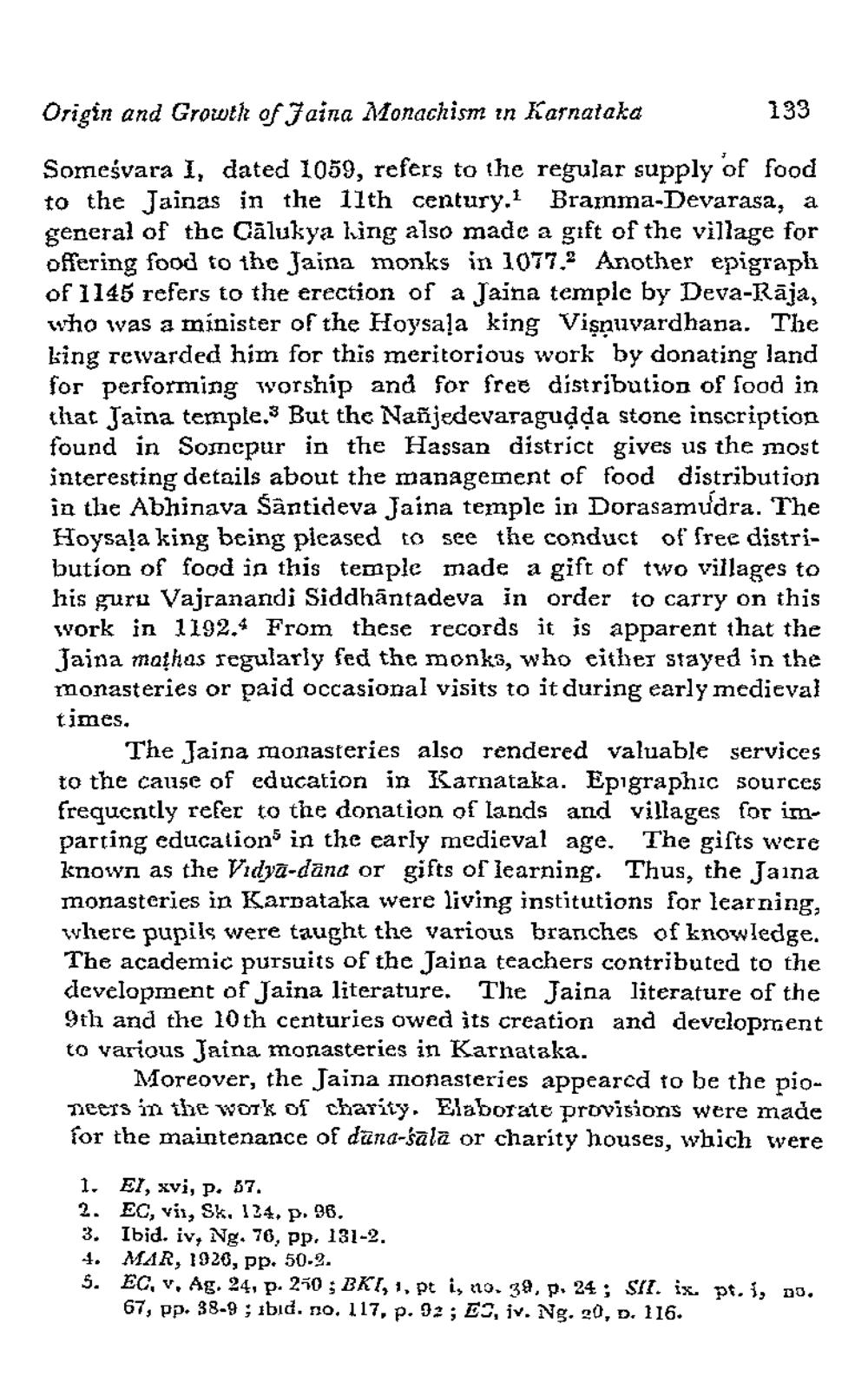________________
Origin and Growth of Jaina Monachism in Karnataka
133
Someśvara I, dated 1059, refers to the regular supply of food to the Jainas in the 11th century.1 Bramma-Devarasa, a general of the Calukya hing also made a gift of the village for offering food to the Jaina monks in 1077.2 Another epigraph of 1145 refers to the erection of a Jaina temple by Deva-Rāja, who was a minister of the Hoysala king Visnuvardhana. The king rewarded him for this meritorious work by donating land for performing worship and for free distribution of food in that Jaina temple. But the Nañjedevaragudda stone inscription found in Somepur in the Hassan district gives us the most interesting details about the management of food distribution in the Abhinava Śântideva Jaina temple in Dorasamudra. The Hoysala king being pleased to see the conduct of free distribution of food in this temple made a gift of two villages to his guru Vajranandi Siddhantadeva in order to carry on this work in 1192.4 From these records it is apparent that the Jaina mathas regularly fed the monks, who either stayed in the monasteries or paid occasional visits to it during early medieval times.
The Jaina monasteries also rendered valuable services to the cause of education in Karnataka. Epigraphic sources frequently refer to the donation of lands and villages for imparting education3 in the early medieval age. The gifts were known as the Vidya-dāna or gifts of learning. Thus, the Jaina monasteries in Karnataka were living institutions for learning, where pupils were taught the various branches of knowledge. The academic pursuits of the Jaina teachers contributed to the development of Jaina literature. The Jaina literature of the 9th and the 10th centuries owed its creation and development to various Jaina monasteries in Karnataka.
Moreover, the Jaina monasteries appeared to be the pioneers in the work of charity. Elaborate provisions were made for the maintenance of duna-sala or charity houses, which were
1. El, xvi, p. 57.
2. EC, vii, Sk. 124, p. 96.
3. Ibid. iv, Ng. 76, pp. 131-2.
4. MAR, 1920, pp. 50-2.
5. EC, v, Ag. 24, p. 250; BKI, 1, pt i, no. 39, p. 24; SII. ix. pt. i, no. 67, pp. 38-9; ibid. no. 117, p. 92; EC, iv. Ng. 20, D. 116.




